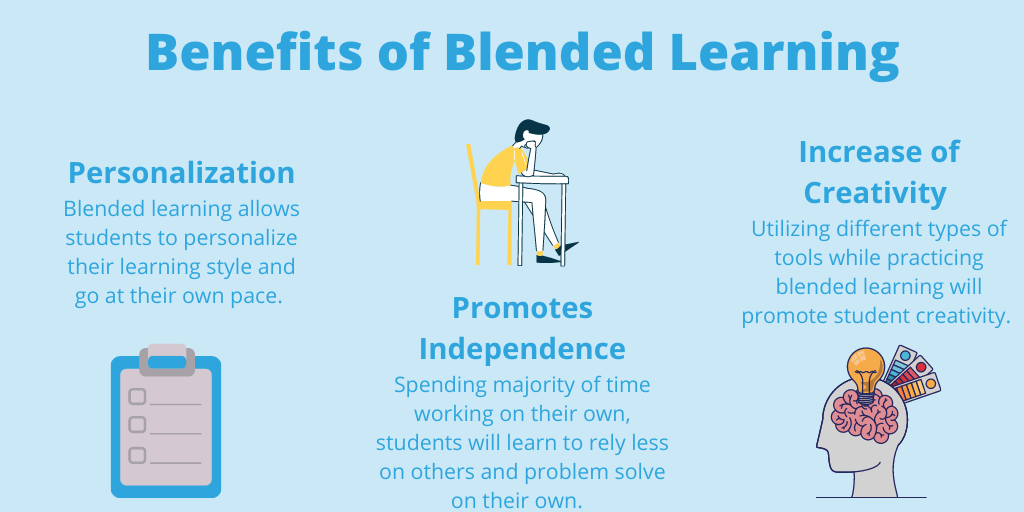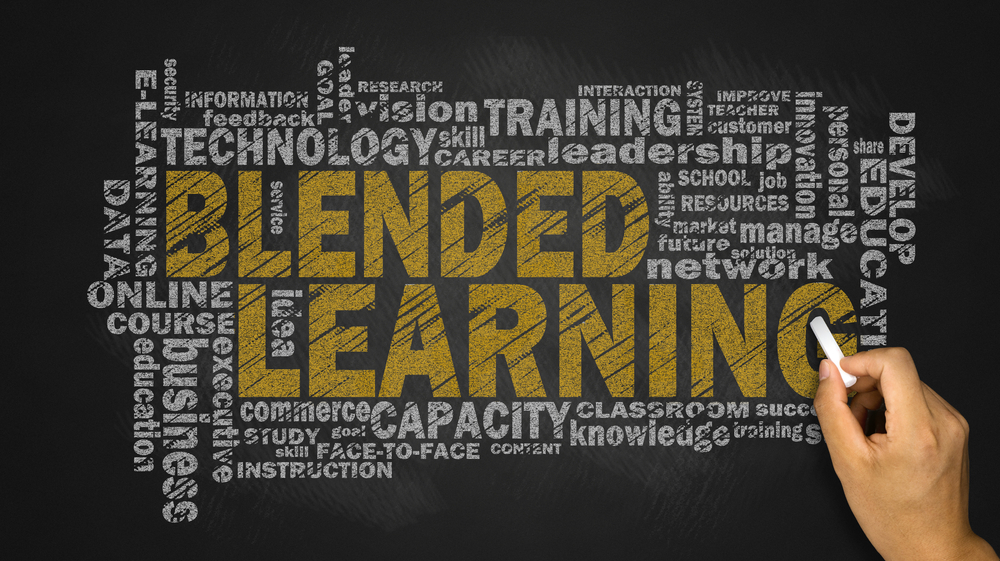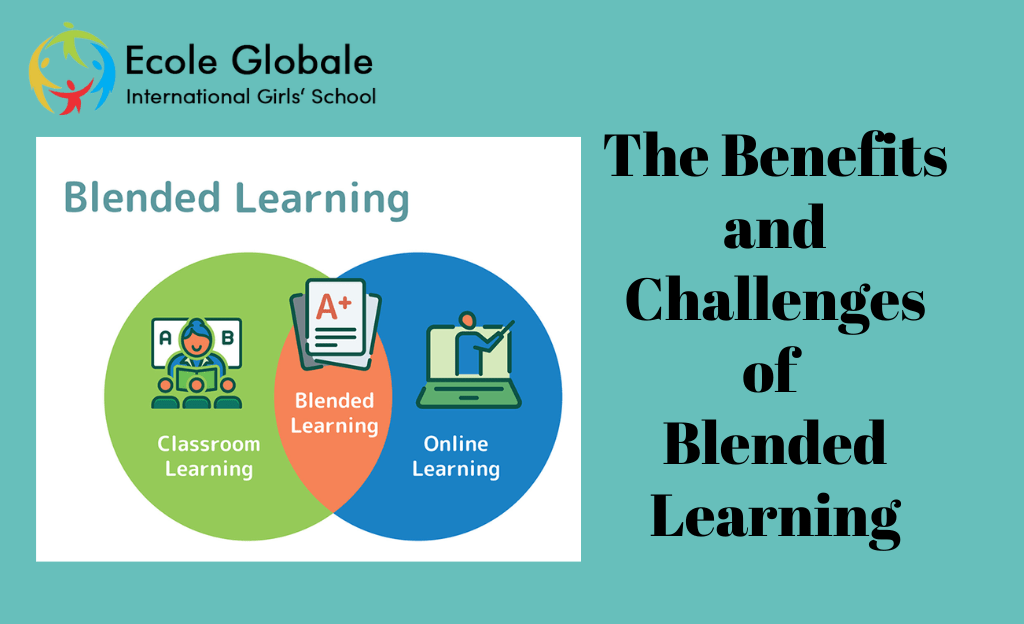Blended learning combines the best of traditional education (classroom) with cutting-edge technology. As per research conducted by the Top Boarding Schools in India, Blended learning combines face-to-face instruction with online learning. It’s a combination of two teaching methods (interactive and passive). It allows different students to learn according to their style.
The importance of blended learning in today’s education system cannot be overemphasized. The world is changing at such a rapid pace that it is no longer possible for teachers to teach the same way they did years ago.
The use of technology and innovative ways of teaching has become an integral part of our daily lives. We can access any information we need using the internet and mobile phones. It makes it necessary for schools to also use technology in their day-to-day operations.
Benefits of Blended Learning

The concept of blended learning has been around for quite a while now, but it’s still one that many people aren’t fully aware of or understand. It’s important to know what blended learning is and how it can benefit your business and your employees.
Flexibility in learning
The main benefit of blended learning is that it allows students to learn at their own pace. It is especially helpful for students who learn better with more time on task and struggle to manage their time well. A student can be given more time to complete a particular assignment or assessment item by doing it outside of class. For example, if a student has trouble getting started on homework that requires writing, they may do the first part of the assignment at home, and then work on the second part in class during class time. This way they are taking less time overall than if they had completed both parts at home in one sitting.
With an online platform, educators can customize lessons according to their specific needs while following common standards or curriculum guidelines set by school districts or states. Students also benefit from increased flexibility because they can access their coursework outside.
Personalized learning experience
The main benefit of this approach is that it allows students to learn in a personalized way. Each student can follow their own pace while they access the required materials and interact with their teachers through various methods- email, chat rooms, or video conferencing. Teachers can also use this method to monitor each student’s progress by tracking their performance through tests, quizzes, and exams.
This method allows teachers to customize their lessons according to each student’s needs and interests instead of using a one-size-fits-all approach which often leads to inefficient results when dealing with larger groups of students with different skill levels, backgrounds, and interests.
Improved student engagement
Many blended learning courses incorporate games and other interactive elements to make lessons more interesting and fun.
Students who learn in an environment where they can interact with their peers and teachers are more likely to be engaged in their learning. Studies suggest that students who participated in blended learning were more engaged than those who only received traditional classroom instruction.
Increased accessibility to resources
Blended learning allows teachers to replace outdated teaching methods like lectures, which research has shown don’t work well with today’s generation of learners who want more hands-on experience. In addition, it allows teachers to adapt their lessons based on how their students are responding and interacting with content, which helps them learn at their own pace while also giving them opportunities to practice new skills before moving on to new material.
Better student outcomes
Another benefit of blended learning is that it allows teachers access to data about how well students are doing throughout a year or semester, which can help them tailor instruction to individual needs more effectively than would be possible with a traditional classroom model where teachers only have access to data about how groups perform overall.
By incorporating digital technology into classroom instruction, blended learning programs have been shown to improve student achievement over time compared with traditional teaching methods.
Challenges of Blended Learning

Implementation and adoption
Another survey done by top Schools in India shows that The challenges of blended learning include managing multiple modes of delivery and making sure that all students are getting the same level of instruction. Teachers must also be prepared for the increased amount of time spent on course content compared with traditional classrooms.
Implementation can be challenging because it requires teachers to shift from traditional teaching methods to incorporating new technologies into their classrooms.
Adoption can be difficult because students may not be familiar with using technology in the classroom. It can lead to problems such as:
- Lack of interest and motivation by students, who expect the traditional lecture-and-test model of education.
- Difficulty understanding how to use new technologies.
Technological and infrastructure limitations
Teachers must have access to technology, which may be difficult in areas where there is a lack of funding.
Some blended learning programs are designed around small group instruction, which means that teachers must divide their time between small group conversations and monitoring large group activities like computer lab time or class discussion boards. It can lead to teacher burnout over time and difficulty managing large groups of students.
Teacher training and professional development
Teachers will need to become more familiar with the technology they’re using, including how it works and its limitations. They’ll need to understand how the technology can support their teaching strategies, and they’ll need to learn the best ways to train students on how to use it effectively.
Balancing online and face-to-face interactions
Teachers need to find ways to balance face-to-face interactions with online ones so students don’t lose interest. They also need to ensure students understand how important it is to participate actively during class discussions or when using other types of technologies (such as podcasts) in their studies. It requires careful planning beforehand so teachers can adjust as needed when new problems arise during lessons or activities involving technology use by students outside.
Best practices for blended learning
Clear and effective communication with students and families
Communication is key to successful blended learning programs. Teachers must be able to communicate effectively with students and families while also maintaining a professional tone. It is especially important when communicating via email, text message, or social media.
Integration of technology in a meaningful way
Blended learning is not just about using technology; it’s about using technology to create a new learning experience. It requires a thoughtful approach to integration that connects the learning objectives with the pedagogical strategies and resources.
You can’t just throw technology into your existing classroom without regard for how it might work with what you already have in place — you need to plan carefully so that it fits into the flow of your day without disrupting anything else or causing additional stress on yourself or your students.
Collaboration and communication between teachers
An effective blended environment allows for collaboration among students and teachers, which can lead to improved student engagement and achievement and increased teacher satisfaction with their jobs.
The goal is to ensure everyone is engaged in the same class experience.
Regular assessment and evaluation of blended learning
To determine what works and what doesn’t work in your blended learning environment, regular assessment is a must. Assessments can be used to determine how well students are mastering the course content, as well as how well they can apply their knowledge in real-world situations. Evaluations can determine what parts of your program need improvement or revision so you know where to allocate your resources.
Conclusion
In sum, the blended learning challenge for the future is to focus on integrating technology into existing curriculums in a meaningful way so that students can get the most out of these educational tools. Schools and educators see beneficial results in their student’s educational achievements and cognitive development if they do this well and effectively. In other words, we think that teachers should strive to develop educational software that improves both student achievement and confidence in learning. You cannot have one without the other.
For any queries related to parenting, schooling, or any student-related tips, click here to check out our latest blogs






